How To Grow Baby Spider Plants In Water (Easily!)
Today we are sharing how to grow baby spider plants in water… with easy step by step instructions!
Spider plants have long green and white foliage and a reputation for being one of the easiest houseplants to grow. They are a funky, friendly houseplant, especially easy for those new to indoor gardening!
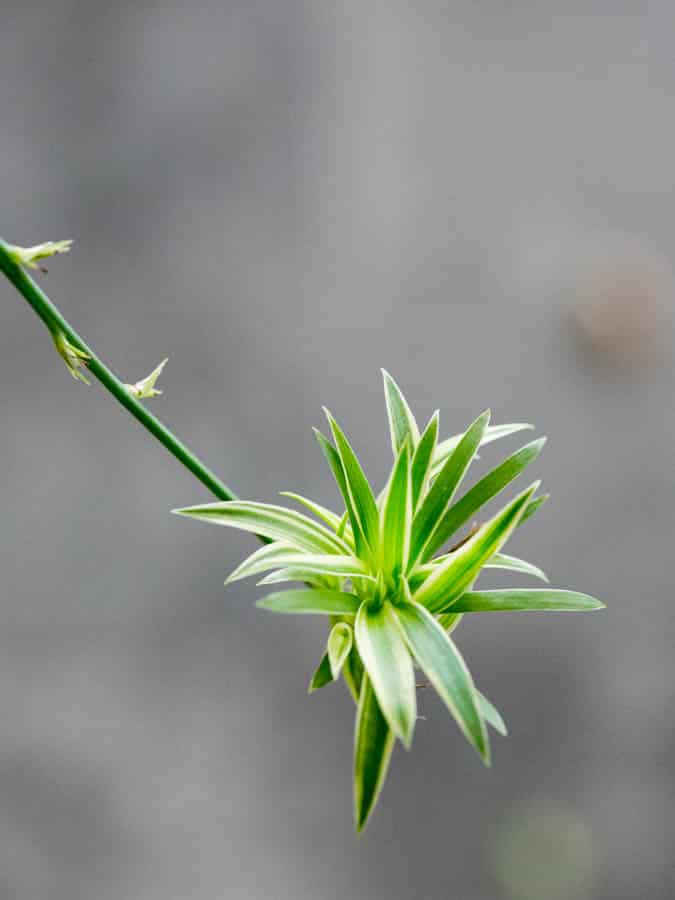
When spider plants are happy, they will reproduce prolifically, offering you an overflow of adorable new babies.
In order for those new plants to grow and thrive into their own adult spider plant, you need to give them a growing medium, like water or soil.
Adult spider plants can grow up to 24 inches tall, and their thin stems, on which baby spider plants sprout, can sprawl and become several feet long! Baby plantlets are very easy to propagate… no green thumb needed!
Get our list of the most aesthetic houseplants here!
About Baby Spider Plants:
Spider plants (Chlorophytum comosum), find their native habitat in South Africa. They have long, variegated white and green leaves and thrive in warm temperatures with indirect light and moist soil that is well-draining.
As indoor plants, baby spider plants are one of the easiest houseplants to propagate from a parent plant. A new spider plant can grow with just water!
Spider plants are an easy to grow indoor plant that propagate prolifically. If the mother plant is healthy, she will readily sprout new baby spider plants that can be grown into new plants!
Did you know? Spider plants are also known as an airplane plant, ribbon plant, or spider ivy. When spider plants start sending out long stems and the baby spider plants bloom upon them, they look just like baby airplanes taking flight from the mother plant!

Growing Conditions For Baby Spider Plants
In order to produce flowers, a spider plant needs to be healthy and happy.
Spider plants thrive in bright indirect light and enjoy warm temperatures, at least 65 degrees and up to 90 degrees. A mature plant can grow to be about 24 inches tall, and the plant’s roots should be allowed to be bound in the container.
An established spider plant, or mother spider plant, will send new growth in the form of long stems called stolons. When happy, clusters of flowers grow along these long stems and some of them will pollinate and become new spider plants.
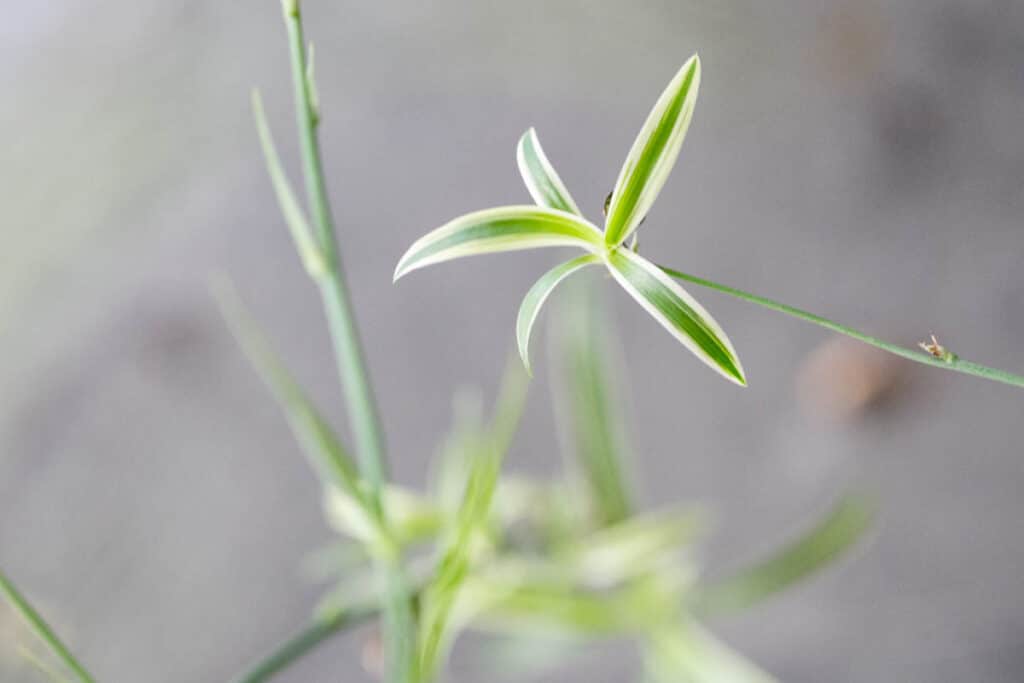
These flowers are greenish white and star shaped, and will self pollinate and turn into miniature spider plants. These tiny spider plants have small roots that will often root themselves to soil while still attached to the mother plant.
Mature spider plants can have many babies, and the easiest way to propagate these babies is to cut them from the main plant and place the roots in a glass of water.
There are several different methods for propagating spider plants, and they are one of the easiest plants to propagate. We think the easiest and best way to grow spider plants is to simply grow the babies in water!
How To Grow A Baby Spider Plant In Water
Growing a baby spider plant in water is incredibly easy. You will need rain water, scissors or clippers, a small glass jar, and a baby spider plant.
Here are step by step instructions for growing spider plant babies in water:
1. Watch For Root Buds On Baby Spider Plant
First, watch for tiny roots to grow on your baby spider plant.
When healthy, the mother spider plant will start sending out flowers. These flower shoots grow on the end of a long stem and bloom in small, white star-like flowers.
Spider plants are self pollinating, and these flowers will grow into baby spider plants. These flowers eventually become the new baby spider plants, developing new leaves and eventually a root system.
Once the spider plantlets start growing, you can start watching for new roots. The root system will start to develop at the base of the baby spider plant. They will look like small, white fat stubby roots.
See picture here:
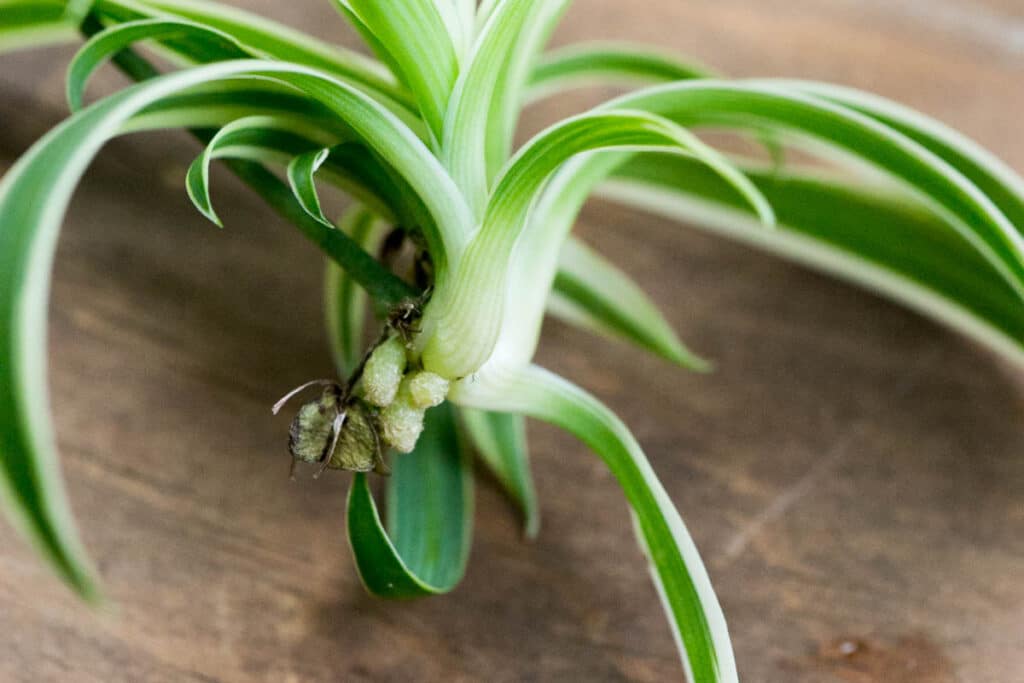
When you notice the stubby root growth has developed, you can then cut your baby spider plant and transfer it to a growing medium, such as soil or water. In this case, we are using water!
2. Cut The Baby Spider Plant From The Stem
Once you have identified the roots, get ready to cut your baby spider plant off and transplant it into water!
Where to cut baby spider plants:
Cut the spider plant baby from the stem, close to where the stem and the baby are attached (at the base of the plantlet). You can use a clean pair of scissors or a sharp knife to remove the baby spider from the mature plant.
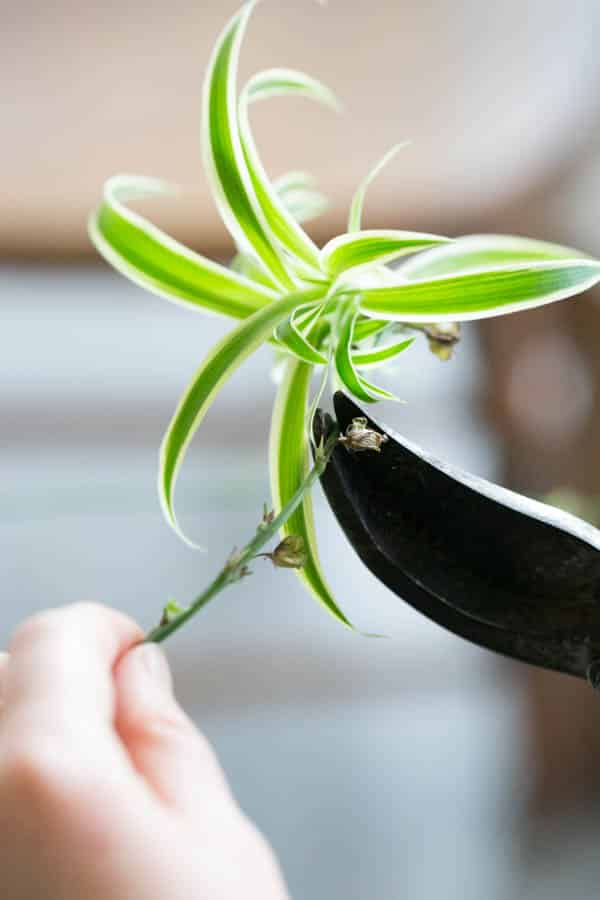
Remove the long stem from where you cut the baby plant (up to where the next flower node attaches) so that the mother plant can put her energy into growing more babies.
The spent stem is no longer needed from the point of removal, and is just a waste of energy for mama spider plant!
Learn how to water snake plants here!
3. Place The Spider Plant In Jar With Water
Place the baby spider plant in a jar that is large enough for the baby plant to soak it’s roots but also allows the plant leaves to support itself in the jar above the water.
You want the jar to be large enough to fill with water and cover the roots, yet small enough that the plant’s leaves can support and hold up the plant.
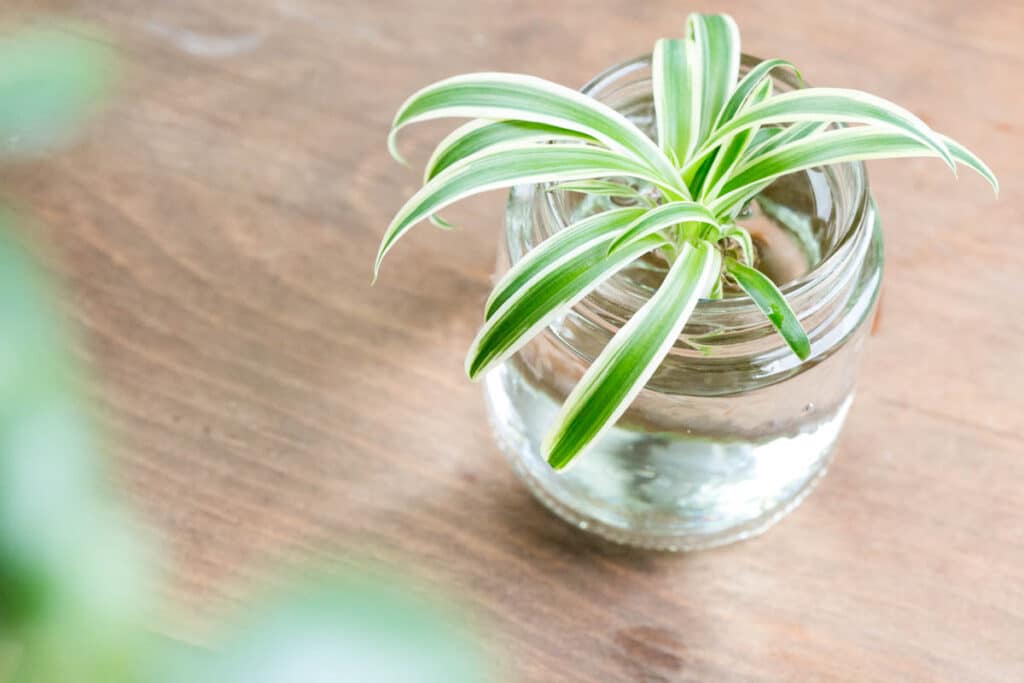
You do not want the leaves of the baby spider plant to be submerged in the water. If you have a few leaves that are too long and keep falling into the water you can gently pinch them off.
A large baby food jar or small mason type jelly jar works very well. The goal is to allow the roots to hang down into the water while the plant foliage is dry. See pictures for inspiration.
The best water to use for this is rain water, because it has ample minerals and no chemicals (see info on the best water for baby spider plants below).
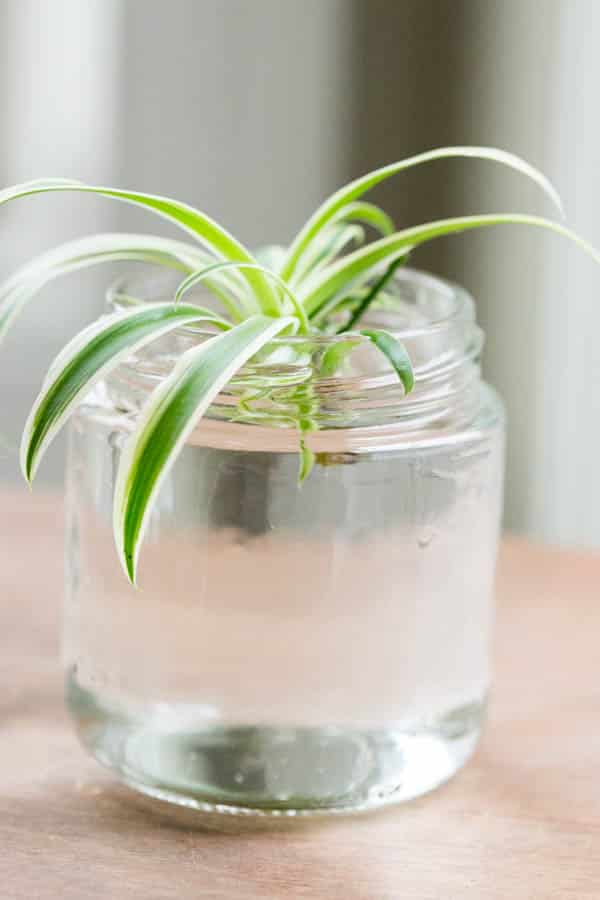
It can be normal to have some green algae build up in the water over time.
4. Let The Spiderette Roots Grow
Let the baby spider plant roots grow in the water. This process takes several weeks to a month.
Here are photos of a baby spider plant side by side, at the initial cutting when the roots are at the stub stage, and at 3 weeks. The roots at 3 weeks are several inches long.

5. Transplant The Baby Spider Plant
Once the roots are long, healthy and established, transplant the baby spider plant into a small, 3-4-inch pot. The roots should be several inches long.
You will want to use a well-draining house plant soil and a container that has a drainage hole in the bottom of the pot. Spider plants like to be root bound, therefore you do not want to use a container that is too big.
Once the plant grows, you can transplant it to a larger pot.

This new container is where the baby spider plant will grow and develop it’s own roots.
Did you know? Spider plants are considered one of the easiest house plants to grow. A parent spider plant can produce hundreds of babies in it’s lifetime. A healthy adult spider plant can live 20 years or longer!
The Best Water To Use
The best water to use for spider plant propagation is actually rain water. This is because the rain water does not have the additives such as fluoride, salt or chlorine that regular tap water may have.
Fluoride can cause the spider plant to develop brown tips at the end of the leaves. If you don’t live in a rainy environment, you can use tap water and let it sit out for a few days.
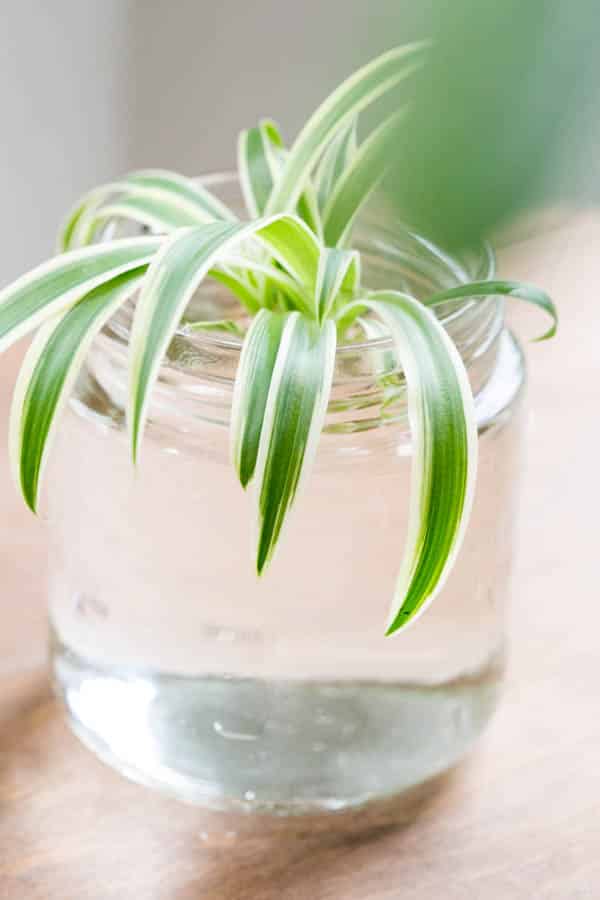
Filtered water also works well. Do not use distilled water because it does not have the minerals within it that they plant may need.
If you use well water and treat it with a water softener, which is salt, it can actually kill houseplants. (We speak from experience). So stick with rain water if possible!
How Much Water?
Growing spider plant babies in water is pretty simple, but you want to keep the water off of the baby plant’s leaves.
Make sure the roots of the spider plant baby are covered, but keep the spider plant leaves dry. The amount of water needed will depend on the container size, we use about 3/4 cup here.
General Spider Plant Care
To care for your spider babies, make sure they have well-draining soil and are getting enough water. Water a spider plant about once a week. The soil should be 50% moist when watering.
Allow excess water to drain through the bottom of the container, and use a well draining, houseplant specific soil.

Spider plants need bright indirect light (too much light can be detrimental to the leaves, causing burning and brown spots). They enjoy their root ball to be bound tightly in their container.
Prevent root rot with well-drained soil and by using a soil moisture meter to prevent over watering.
Frequently Asked Questions
If you do not remove the spider plant babies, they will just continue to grow and thrive right off of the mother plant! You do not necessarily have to remove baby spider plants, but they are fun to grow and make excellent new plants to give as gifts.
Spider plants will grow very quickly with the right conditions. They need consistency in warmth, moisture and light. If all of a spider plant’s needs are met, it can grow very quickly. The leaf rosettes can reach 12 inches or more in height within six months.
Removing spiderettes from a spider plant will keep the plant to a more manageable size. In addition, the energy from the plant will also go into maintaining the overall health and vitality of the mother plant. You do not necessarily have to remove baby spider plants, but keep in mind that the plant will need more water and fertilizer when supporting the growth of her new baby plants.
A spider plant can live for 20-40 years when give proper care and growing conditions! They may need to be transferred to a new pot several times during their life span.
Baby spider plants make a wonderful first plant for those who are interested. And since spider plant babies are so easy to grow, they make a great plant gift for the first-time plant owner. A baby spider plant is a great gift for Mother’s day, Christmas, or birthdays. Before long, your friends and family will have large spider plants of their own to enjoy.
Spider plants are neither male nor female! They contain both male and female organs and are considered a hermaphroditic plant. They do not need cross pollination from any other plant to multiply. Both male and female organs are present in the flowers. They self-pollinate to create babies.
Yes, if you have a spider plant and it is healthy, it will eventually multiply.
Glossary Of Terms:
Propagation: A plant’s natural ability to grow and create new plants
Stolon: The long stem the baby plant grows from
Mother Plant: The main spider plant that grows and produces baby spider plants
Spiderette: A new baby spider plant that grows on the stolon of the mother spider plant
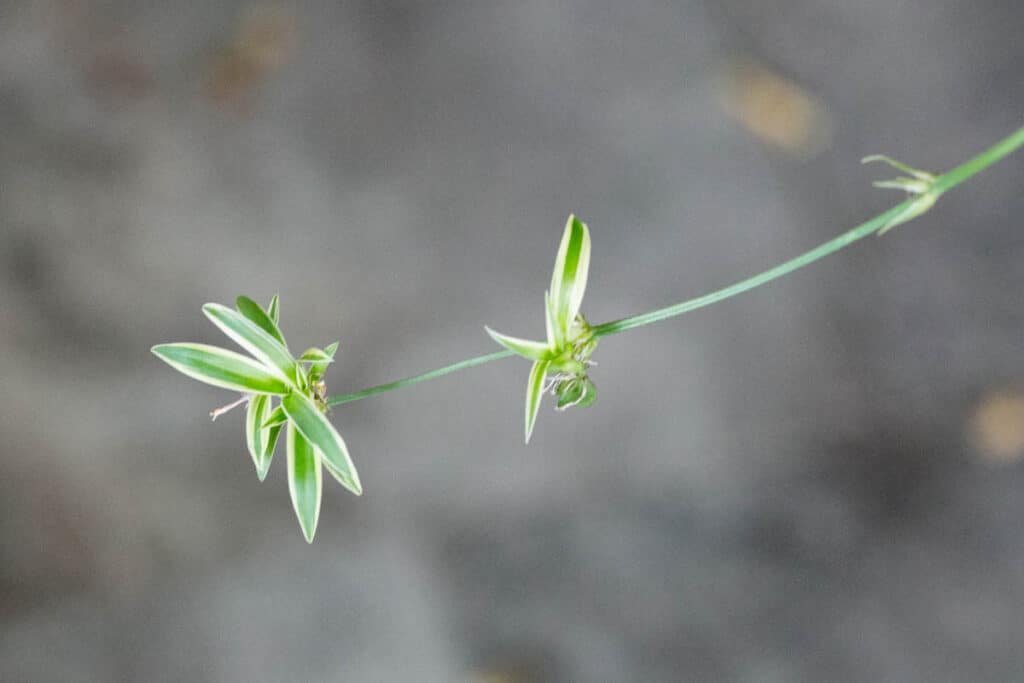
Conclusion
Intriguing and easy to grow, the spider plant is a wonderful choice for those who want to venture into the wild jungles of houseplants. A full-grown plant will produce hundreds of baby spider plants, spiderettes, in it’s lifetime.
As we have shown today, it is very easy to grow baby spider plants in water. Once the roots grow, transfer the plant to a small pot and give it as a special gift or keep it for your own house plant collection!
Enjoy you baby spider plant adventures, and let us know how many plants you are able to propagate this year!

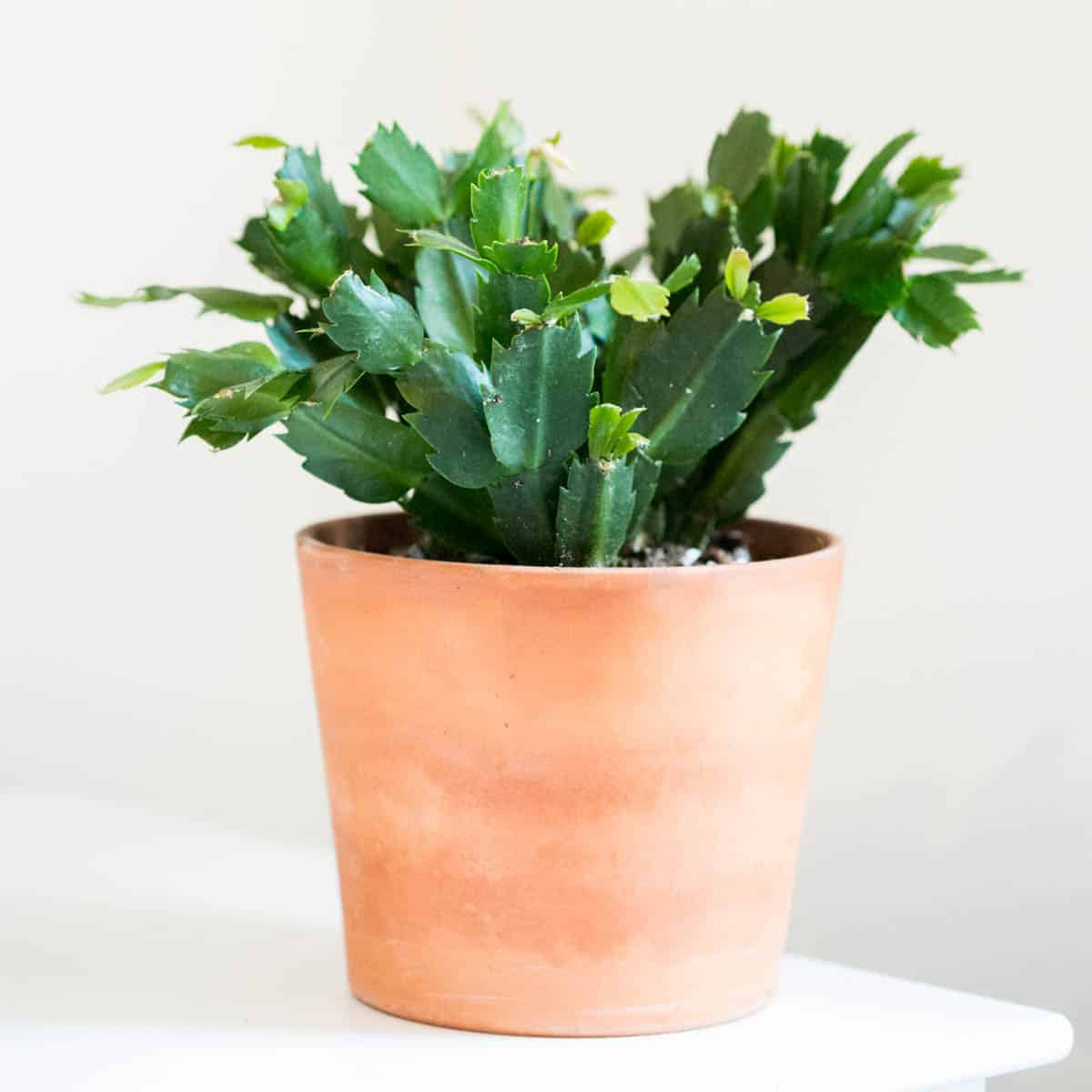
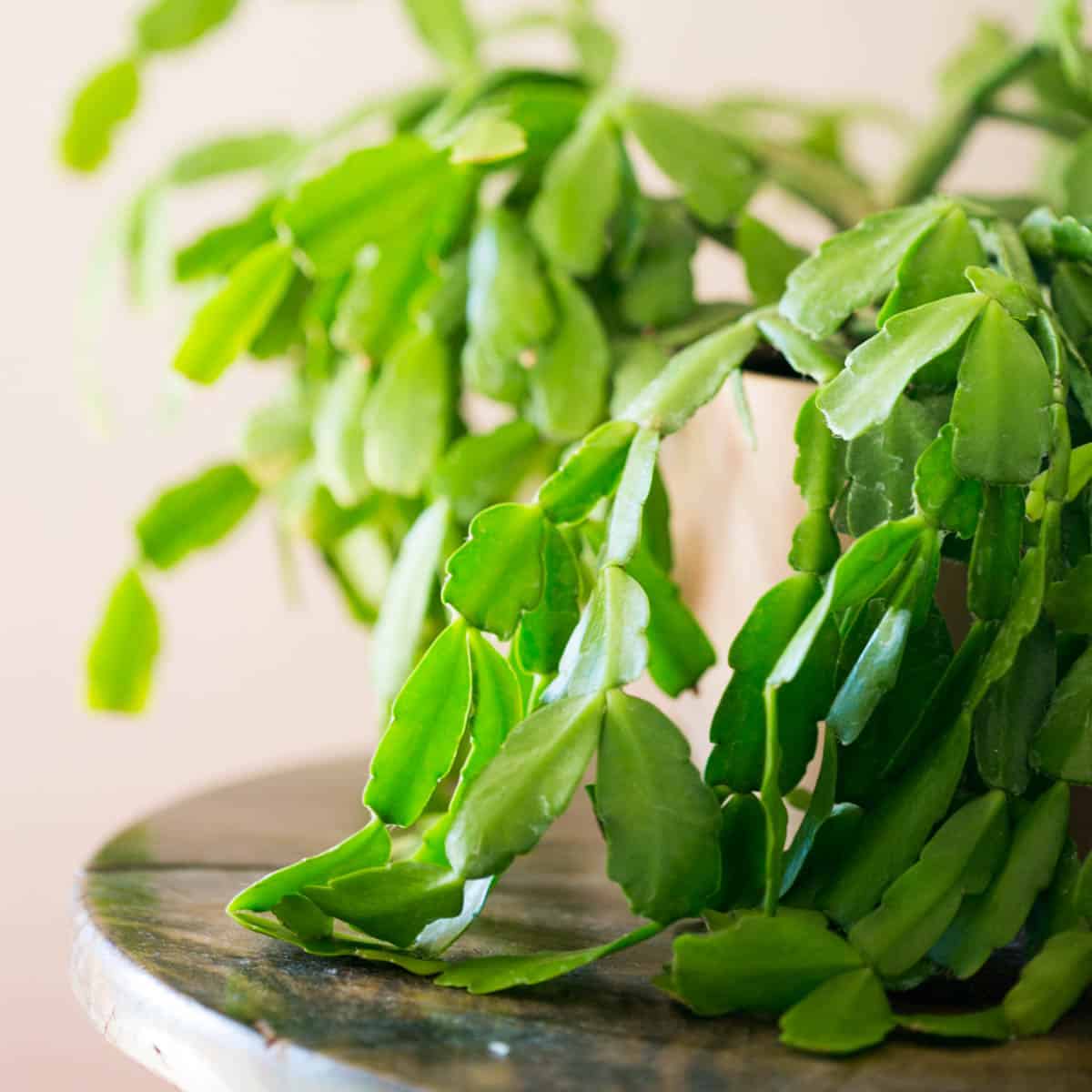
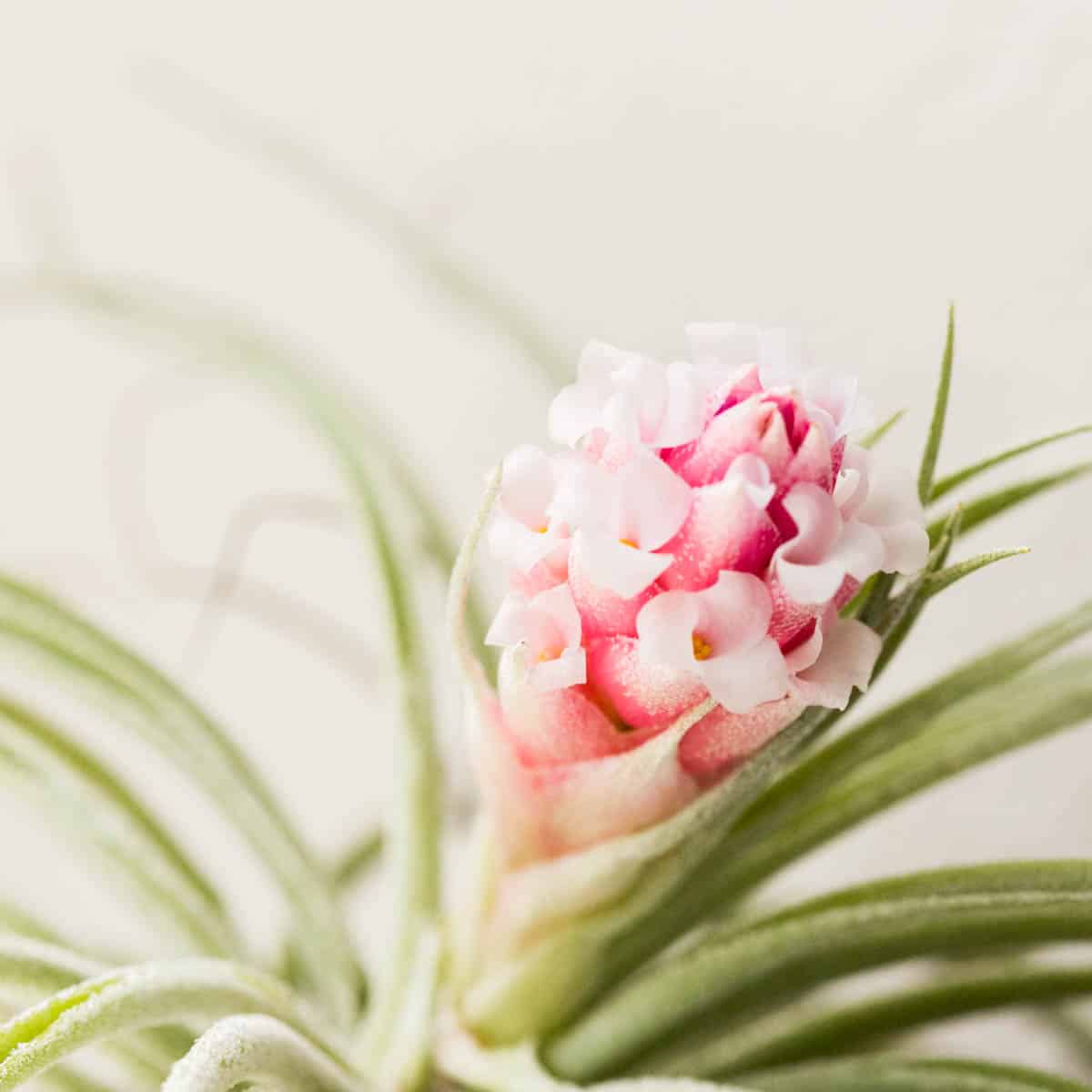
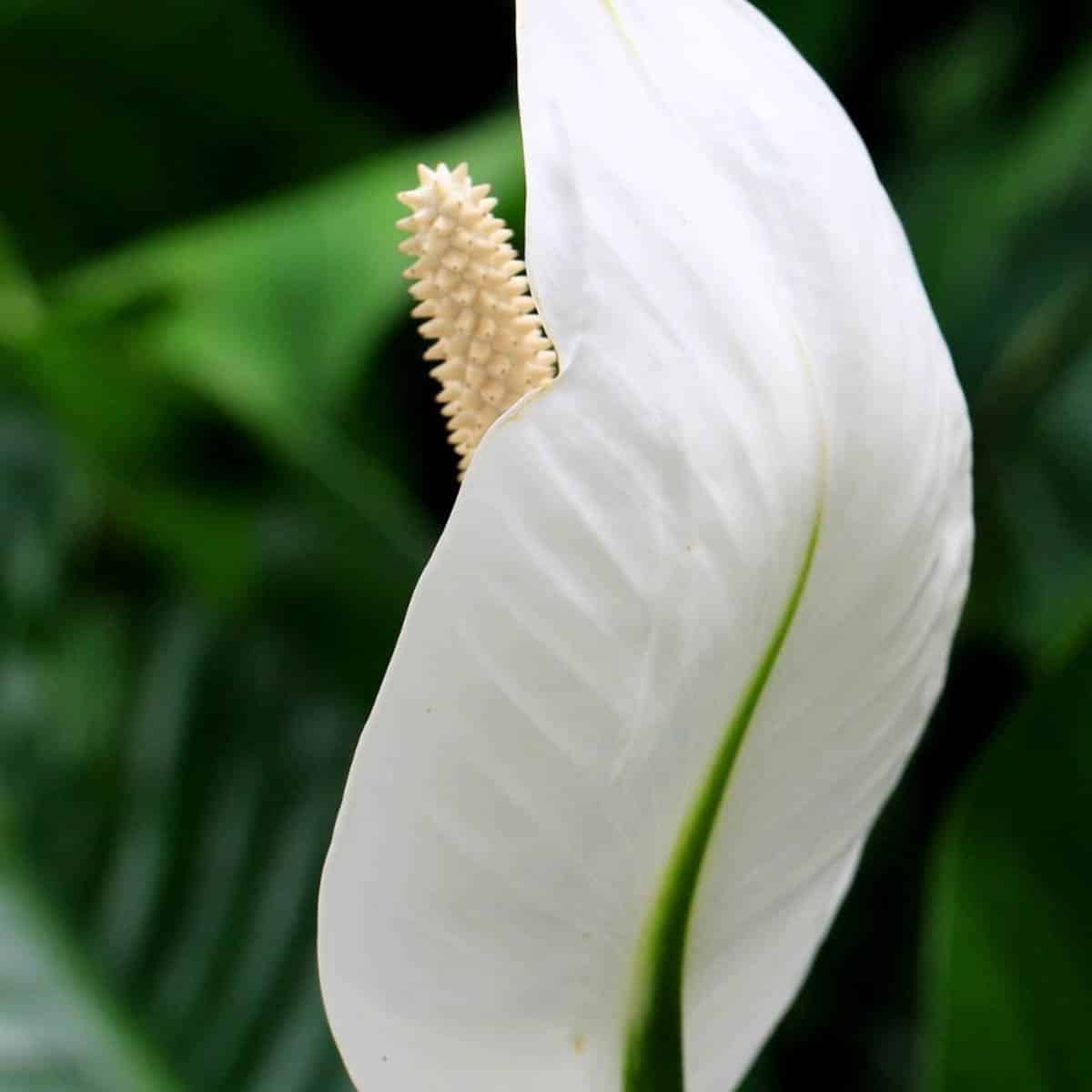
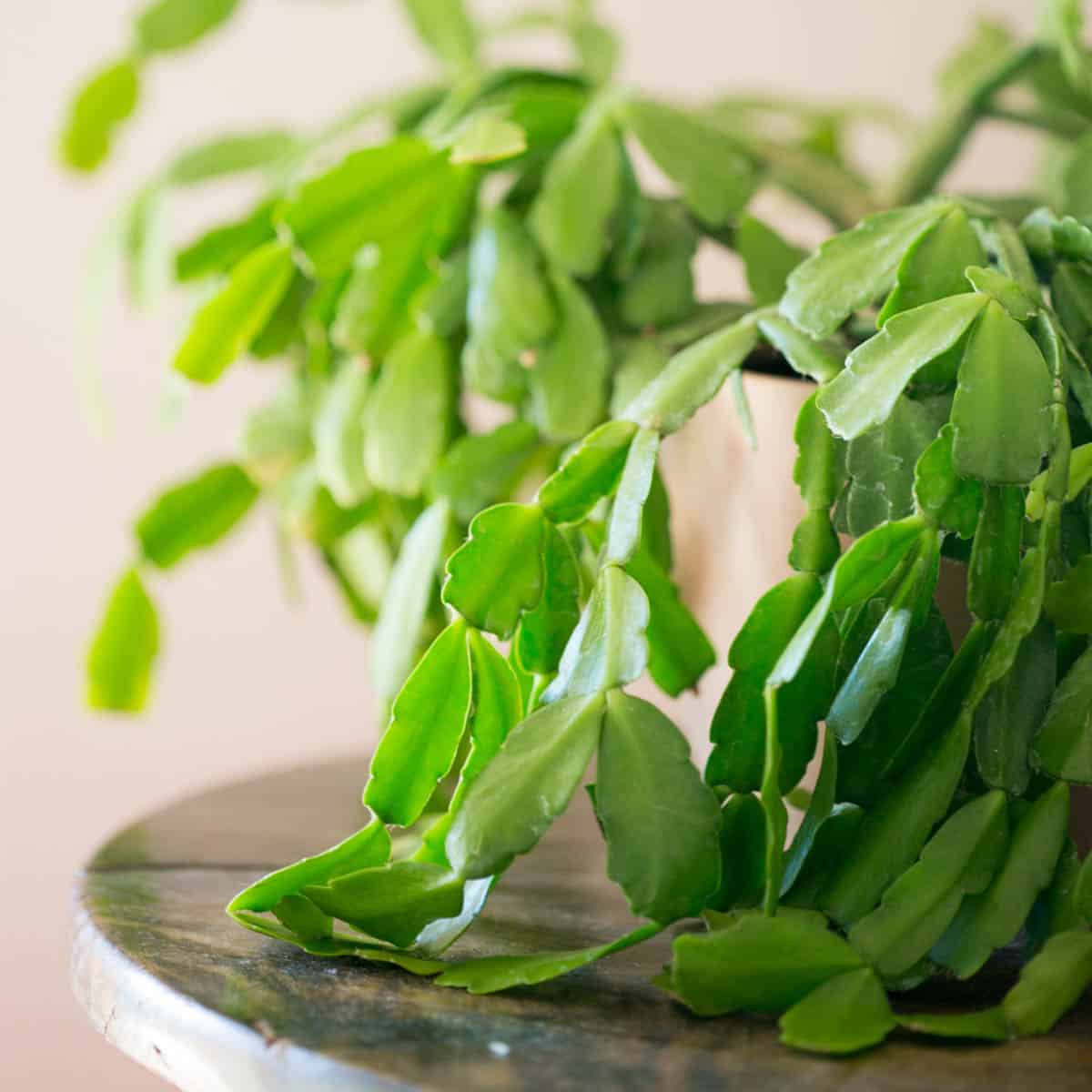
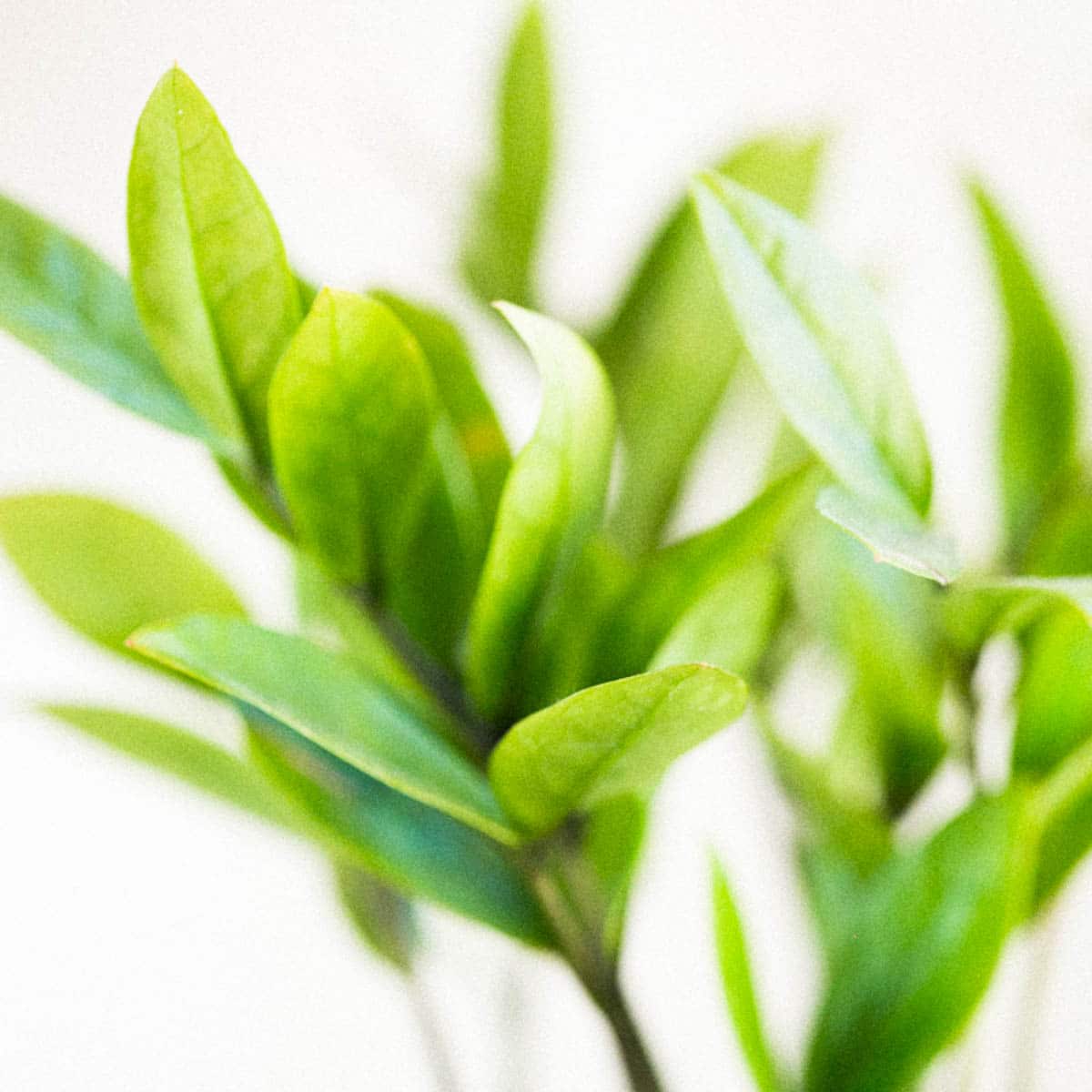
I have the mom, and I ready have 2 babies in the little pots,,, and they’re groin grown beautiful…
I love them…
Thanks
Hi Conseulo! So excited for you, they are fun to grow. Thank you for your comment! Happy holidays.
Me and my daughter are making spider plants from baby spiders for her bridesmaids. It’s exciting to watch them grow from a tiny flower to a mommy plant!
Hi Barbara Jean! Spider plants really are such a fun plant to grow and propagate. That is a really clever and fun idea!